Finding other ways to say “you’re welcome” helps you express warmth, appreciation, and sincerity in your communication. When you use thoughtful alternatives, your words can feel more personal, kind, and genuine, showing others that their gratitude truly matters to you. Whether you’re speaking to a friend, coworker, or client, these expressions make your responses sound more human, warm, and caring.
What Does “You’re Welcome” Mean?
The phrase “you’re welcome” is a kind and polite response to “thank you.” It means that you acknowledge someone’s appreciation and you’re genuinely happy to have helped them. It completes the emotional exchange of gratitude and shows respect, kindness, and openness in everyday communication.
Is It Professional or Polite to Say “You’re Welcome”?
Yes, saying “you’re welcome” is both professional and polite in any situation. It’s respectful, traditional, and always appropriate. However, using other variations can make your tone more friendly, relaxed, or modern depending on the relationship or setting — for example, “My pleasure” or “Anytime!” can sound warmer or more approachable.
Synonyms for “You’re Welcome”
- My pleasure
- No problem
- Anytime
- Glad to help
- It was nothing
- Don’t mention it
- Happy to help
- Not a problem
- Sure thing
- Of course
- It’s nothing
- No worries
- It was my honor
- Always happy to help
- You got it
- It’s all good
- You’re very welcome
- It’s my duty
- That’s okay
- You’re most welcome
1. My Pleasure
Scenario: Used when you want to express that helping someone genuinely made you happy and that you enjoyed being of service.
Meaning: “My pleasure” shows that you didn’t just help out of obligation, but out of genuine kindness and joy. It communicates warmth, satisfaction, and gratitude in return.
Examples:
- My pleasure! I’m really happy that I could help you today.
- It was truly my pleasure to assist you with this issue.
- My pleasure, anytime you need support just let me know.
- No worries, it’s always my pleasure to make things easier for you.
- Honestly, it was my pleasure working together on this.
Tone: Polite, warm, and professional. It works beautifully in both formal and friendly situations.
Explanation: This phrase gives off a genuine and grateful energy, making the person you helped feel valued and respected. It’s a graceful and timeless expression often used in customer service, hospitality, and polite everyday conversation.
2. No Problem
Scenario: Used when you want to sound casual, relaxed, and reassuring, especially with friends or colleagues.
Meaning: “No problem” means that helping wasn’t a burden at all — you did it willingly, and it didn’t cause any inconvenience.
Examples:
- No problem! I was happy to help you with that.
- Sure thing, no problem at all — glad to assist.
- That’s fine, really no problem on my end.
- Don’t worry about it, no problem helping out anytime.
- No problem, I enjoyed doing that for you.
Tone: Friendly, informal, and easygoing. Works well with peers or in casual chat.
Explanation: This phrase helps you sound approachable and relaxed, showing that you didn’t feel burdened by helping. It’s best for casual settings, where a softer, modern tone fits better than formal language.
3. Anytime
Scenario: Used when you want to show that you’re always available and happy to help again.
Meaning: “Anytime” expresses that the person can rely on you in the future without hesitation. It shows generosity and approachability.
Examples:
- Anytime! I’m always glad to help whenever you need something.
- You’re most welcome — anytime you need me, just let me know.
- It’s fine, anytime you need support, I’m here for you.
- No problem, anytime — happy to help again.
- Anytime! Helping you was no trouble at all.
Tone: Friendly, warm, and generous. Perfect for both personal and semi-professional situations.
Explanation: This response gives a sense of ongoing support and reliability, letting the person know your help isn’t just a one-time favor.
4. Glad to Help
Scenario: Used when you want to express genuine happiness about being helpful or useful to someone.
Meaning: “Glad to help” communicates satisfaction and kindness, showing that you truly wanted to assist.
Examples:
- Glad to help! I’m happy you found what you needed.
- No problem, I was glad to help with the task.
- Glad to help — teamwork makes everything easier!
- Always glad to help when I can.
- Glad to help, it’s what friends are for.
Tone: Warm, friendly, and modest. Suitable for casual and professional settings alike.
Explanation: This phrase emphasizes your willingness and positivity, making your response sound kind and emotionally aware.
5. It Was Nothing
Scenario: Used to downplay the effort you made, showing humility and kindness.
Meaning: “It was nothing” means that what you did wasn’t a big deal and you were happy to do it.
Examples:
- It was nothing! I’m glad I could help out.
- Don’t mention it, it was nothing really.
- It was nothing, I’m happy you’re pleased.
- It was nothing, anyone would’ve done the same.
- It was nothing, truly glad to help.
Tone: Humble, sincere, and gentle.
Explanation: This phrase helps you show modesty while still being kind and respectful, making the other person feel comfortable.
6. Don’t Mention It
Scenario: Used when you want to reassure someone that no thanks are needed.
Meaning: “Don’t mention it” suggests that you helped willingly and there’s no need for gratitude.
Examples:
- Don’t mention it! It was my pleasure.
- Really, don’t mention it, happy to do that for you.
- Don’t mention it, it was such a small thing.
- Don’t mention it, always glad to lend a hand.
- Truly, don’t mention it, I enjoyed helping.
Tone: Relaxed and polite.
Explanation: This phrase is a classic, gentle response, showing that your kindness was genuine and effortless.
7. Happy to Help
Scenario: Used when you feel satisfied that your assistance made someone’s day easier.
Meaning: “Happy to help” expresses joy and satisfaction in being able to make a difference.
Examples:
- Happy to help! I’m glad it worked out well.
- Happy to help, that’s what I’m here for.
- Happy to help, really glad things turned out fine.
- It’s okay, happy to help anytime.
- Happy to help! Always here if you need more support.
Tone: Warm, caring, and approachable.
Explanation: This phrase radiates positive energy and sincerity, leaving the listener feeling appreciated and respected.
8. Not a Problem
Scenario: Used in casual and relaxed settings to reassure that helping was easy and not inconvenient.
Meaning: “Not a problem” tells the person that what they’re thankful for didn’t cause any trouble.
Examples:
- Not a problem! Glad to help out.
- No worries, really not a problem at all.
- Not a problem, I enjoyed helping you.
- Not a problem, anytime you need me.
- Not a problem, that was an easy fix.
Tone: Friendly and casual.
Explanation: This response feels modern and effortless, perfect for friends, family, or informal workplace chats.
9. Sure Thing
Scenario: Used in casual speech to confirm willingness or agreement in helping.
Meaning: “Sure thing” means “of course” or “no trouble,” and it adds a confident, helpful tone.
Examples:
- Sure thing! Happy to do that for you.
- Sure thing, no problem at all.
- You got it, sure thing!
- Sure thing, always glad to help.
- Sure thing, consider it done.
Tone: Upbeat and casual.
Explanation: This phrase shows positivity and readiness, making you sound confident and cooperative in your response.
10. Of Course
Scenario: Used to show that helping was natural, obvious, and something you’d gladly do again.
Meaning: “Of course” suggests that your help was expected and willingly given.
Examples:
- Of course! Always happy to help.
- Of course, I’m here for you.
- Of course, that’s what friends do.
- Of course! I wouldn’t have it any other way.
- Of course, you can count on me.
Tone: Sincere, friendly, and reassuring.
Explanation: This phrase creates a strong sense of trust and care, making it great for meaningful relationships.
11. It’s Nothing
Scenario: Used to show humility and make the other person feel comfortable thanking you.
Meaning: “It’s nothing” downplays your effort and puts the focus on kindness.
Examples:
- It’s nothing! Glad you liked it.
- It’s nothing, don’t worry about it.
- It’s nothing, I enjoyed doing it.
- It’s nothing, seriously, no big deal.
- It’s nothing! Just happy to help.
Tone: Humble and caring.
Explanation: This response feels modest and heartfelt, perfect for when you want to show sincerity.
12. No Worries
Scenario: Used in relaxed and casual contexts to ease tension or show friendliness.
Meaning: “No worries” means the situation caused no stress or inconvenience at all.
Examples:
- No worries! I’m glad to help.
- No worries, it was easy to handle.
- No worries, happy you’re satisfied.
- No worries, I’ve got your back.
- No worries! Always glad to assist.
Tone: Informal and light-hearted.
Explanation: This phrase gives your reply a friendly, cheerful tone, making conversations feel comfortable and easygoing.
13. It Was My Honor
Scenario: Used in formal or emotional settings where you feel privileged to help.
Meaning: “It was my honor” means you feel proud and grateful to have been able to help.
Examples:
- It was my honor to be part of this.
- It was my honor, thank you for including me.
- Truly, it was my honor to assist you.
- It was my honor to help in this meaningful way.
- It was my honor, I value this opportunity.
Tone: Formal, respectful, and heartfelt.
Explanation: This phrase expresses deep respect and gratitude, perfect for heartfelt or official moments.
14. Always Happy to Help
Scenario: Used to express ongoing kindness and consistent willingness to support others.
Meaning: “Always happy to help” shows steady kindness and reliability, offering lasting emotional warmth.
Examples:
- Always happy to help!
- Always happy to help, anytime you need.
- Always happy to help, just give me a call.
- Always happy to help, truly glad to be there.
- Always happy to help! That’s what teamwork means.
Tone: Positive and reliable.
Explanation: This expression highlights kindness and dependability, ideal for workplaces and friendships alike.
15. You Got It
Scenario: Used casually to confirm that helping was easy or expected.
Meaning: “You got it” is an upbeat, friendly way of saying “no problem” or “you’re welcome.”
Examples:
- You got it! Glad to do that.
- You got it, happy to help.
- You got it! Anytime you need me.
- You got it, that was simple.
- You got it! Glad to lend a hand.
Tone: Confident, casual, and cheerful.
Explanation: This response makes you sound friendly and supportive, great for light, easy conversations.
16. It’s All Good
Scenario: Used casually to reassure that everything’s fine and there’s no need for thanks.
Meaning: “It’s all good” means there’s no inconvenience and you’re totally fine helping.
Examples:
- It’s all good! I’m happy to do it.
- It’s all good, no trouble at all.
- It’s all good, I’m glad to help.
- It’s all good, don’t worry about it.
- It’s all good! Anytime.
Tone: Relaxed and friendly.
Explanation: This phrase gives your response a laid-back and reassuring tone, great for easygoing exchanges.
17. You’re Very Welcome
Scenario: Used when you want to emphasize warmth and sincerity in your thanks.
Meaning: “You’re very welcome” adds extra warmth and politeness to the standard “you’re welcome.”
Examples:
- You’re very welcome!
- You’re very welcome, it was a pleasure helping.
- You’re very welcome, anytime.
- You’re very welcome, glad it helped.
- You’re very welcome! Take care.
Tone: Polite and warm.
Explanation: This slight variation adds emotional depth and genuine care to your reply.
18. It’s My Duty
Scenario: Used in formal or serious settings, especially when your role involves helping others.
Meaning: “It’s my duty” means it was your responsibility and you’re proud to fulfill it.
Examples:
- It’s my duty to ensure you’re taken care of.
- It’s my duty, glad to be of service.
- It’s my duty, always here to help.
- It’s my duty, I’m happy to do it.
- It’s my duty, thank you for trusting me.
Tone: Formal and respectful.
Explanation: This expression conveys commitment and integrity, suitable for professional or official contexts.
19. That’s Okay
Scenario: Used to make the other person feel comfortable about accepting your help.
Meaning: “That’s okay” tells them their gratitude is appreciated but unnecessary.
Examples:
- That’s okay! I didn’t mind at all.
- That’s okay, I’m glad it worked out.
- That’s okay, happy to do that.
- That’s okay, I enjoyed it.
- That’s okay! Anytime.
Tone: Calm and friendly.
Explanation: This reply sounds humble and kind, helping the other person feel at ease.
20. You’re Most Welcome
Scenario: Used when you want to sound polite and respectful while adding a bit of charm.
Meaning: “You’re most welcome” is a formal, kind way to express heartfelt gratitude in return.
Examples:
- You’re most welcome!
- You’re most welcome, I’m happy to help.
- You’re most welcome, anytime you need.
- You’re most welcome, truly my pleasure.
- You’re most welcome! Take care.
Tone: Formal, gracious, and kind.
Explanation: This phrase gives off a refined, classic warmth, perfect for formal letters, customer service, or polite speech.
Conclusion
Finding other ways to say “you’re welcome” can completely change the way your kindness feels to others. By choosing phrases that show warmth, sincerity, and understanding, you turn a simple response into a moment of connection. Whether it’s a quick “no worries” with a friend or a heartfelt “my pleasure” at work, the right words help express your genuine care.
FAQs
1. Can I say “no problem” in a formal setting?
You can, but it’s best to use phrases like “My pleasure” or “You’re most welcome” in professional situations to sound more polished and respectful.
2. What’s the warmest way to say “you’re welcome”?
The warmest options are “My pleasure,” “Happy to help,” or “It was my honor,” as they sound heartfelt and genuine.
3. What’s the most casual way to say it?
Casual replies like “No worries,” “Sure thing,” or “It’s all good” fit perfectly in friendly or informal chats.
4. Can I use “you got it” in business emails?
Only in relaxed or friendly workplaces — for formal emails, choose “Glad to assist” or “Happy to help.”
5. Why should I learn alternatives to “you’re welcome”?
Using different phrases keeps your communication fresh, personal, and emotionally engaging, showing you care about your tone and connection.

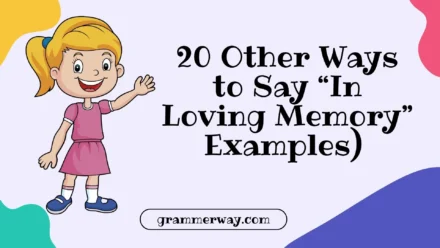
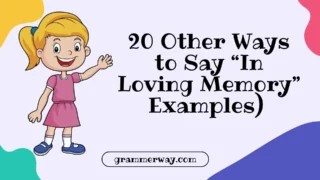
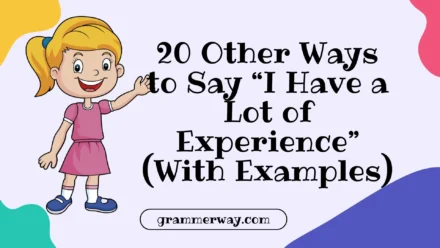
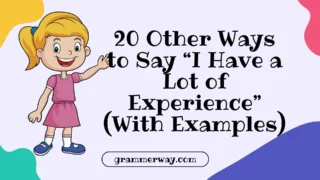

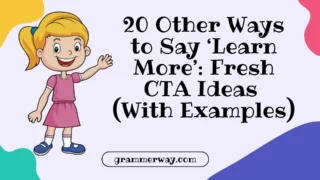
Leave a Comment